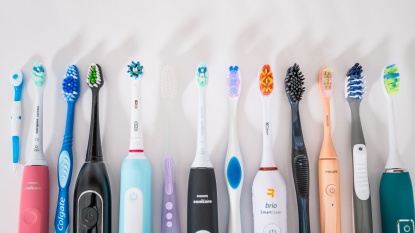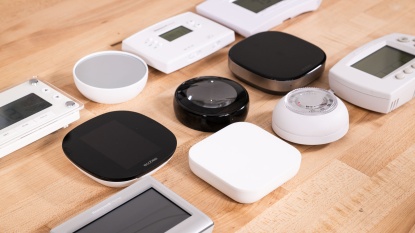Searching for a toothbrush can feel like a quest of epic proportions. Electric or manual? Soft bristles or firm? The options are endless, but fear not—we're here to guide you through the labyrinth of dental hygiene choices. We will attempt to uncover the secrets of a truly superior toothbrush, separating the essential features from the gimmicks. That's why we bought and tested the top toothbrushes on the market and pitted them against one another in a series of tests.
We've come to realize that there isn't a one-size-fits-all solution. Through rigorous testing, we've uncovered a wealth of nuance within both electric and manual models, each offering unique benefits to suit a variety of needs. Let's find out what will work for you.
Manual Vs Electric Toothbrushes
If you are absolutely befuddled by the number of options out there, we've been testing these products since 2017 to uncover the deep cleaning truths of the best toothbrushes out there. There is an argument for electric being more powerful than manual in terms of pure cleaning performance in the 2014 Cochrane Group study, and we've personally found that this holds true.
Due to ongoing analysis of the clinical significance of these studies, we advise against solely relying on claimed benefits when considering the purchase of an electric toothbrush. If enhanced cleaning efficacy is your primary concern and you already adhere to recommended brushing practices, consulting your dentist for personalized advice is advisable. Dentists possess comprehensive knowledge of your dental health and can offer tailored recommendations based on your specific needs and circumstances. Also, if you ask the American Dental Association (ADA) they'll tell you: 'Either manual or powered toothbrushes can be used effectively.' After consulting a dental hygienist and conducting our own testing gauntlet, we wholeheartedly agree, as long as you are brushing twice daily for 2 minutes.
Generally, we found that the features in almost every flagship electric toothbrush model can make proper dental hygiene easier and more streamlined. Thanks to built-in 2-minute timers, helpful apps, pressure sensors, and powerful brush heads, electric models indeed make the process better for the user. However, if you're already locked into a good routine, and your brushing method is solid, manual models will do a fine job as well.
Electric Toothbrush Head Styles
Want to know more about how each electric toothbrush works and how it can serve your specific needs? Read on to find out more about Oscillation/Rotation and Sonic/Ultrasonic.
Oscillation/Rotation
These electric toothbrushes employ a combination of oscillation or rotating movements for teeth cleaning and can be powered by either rechargeable or disposable batteries. Operating at frequencies of less than 20 Hz, these models produce minimal audible noise from vibration. It's important to note that while you can hear these toothbrushes, the movement of the brush head does not produce vibrations audible to the human ear.
Sonic/Ultrasonic
These models rely solely on vibrating brush heads operating within the frequency range of 20 Hz to 20 kHz, typically pulsing between 200-400 Hz, which translates to 24,000-48,000 movements per minute. In contrast, ultrasonic toothbrushes operate at frequencies exceeding 20 kHz, typically at 1.6 MHz, resulting in a staggering 192,000,000 movements per minute. The vibrations generated by ultrasonic devices occur at such high frequencies that they are beyond the perceptible range of the human ear.
Currently, there is a lack of conclusive studies indicating that higher movements per minute translate to improved cleaning efficacy, healthier gums, or discernibly different effects on dental health. The toothbrushes included in this review were chosen based on their prevalence, popularity, and available information.
Which Works Better?
Despite the hype on both sides of the equation, there is no standout option, but you may still have a preference. Here's why:
Rotation-oscillation style models, characterized by their larger brush heads, tend to be less comfortable, particularly for individuals with smaller mouths. If you have a smaller mouth, you may find a side-to-side style brush to be a better fit. After all, your toothbrush won't clean what it can't brush. If your mouth is on the larger side, and you have tougher gums, either style should work just fine for you.
Features and Overall Value
If you're willing to pay a premium for features like an app, smart base stations, charging travel cases, and various “polishing” or “whitening” modes, it's important to understand that these additions may not necessarily result in cleaner teeth. While there could be arguments made for certain features, such as the app included with models like the high-end Oral-B brushes, as potentially beneficial for dental health, they are not essential for achieving the best cleaning results. They are simply extras that may require a significant investment of your hard-earned money. Ultimately, only you and your budget can determine what will work best for your needs.
Conclusion
We've shown that manual or electric toothbrushes can produce a satisfactory clean as long as your routine is consistent. If you need to know more specific models, you can take a look at our comprehensive toothbrushes review.









